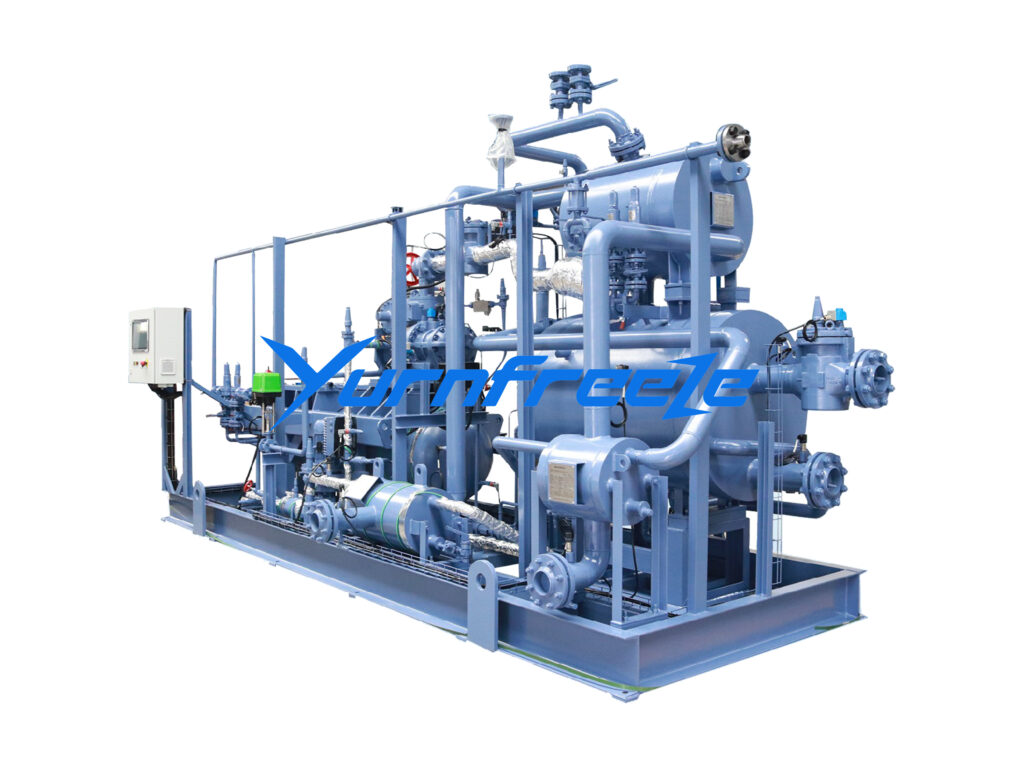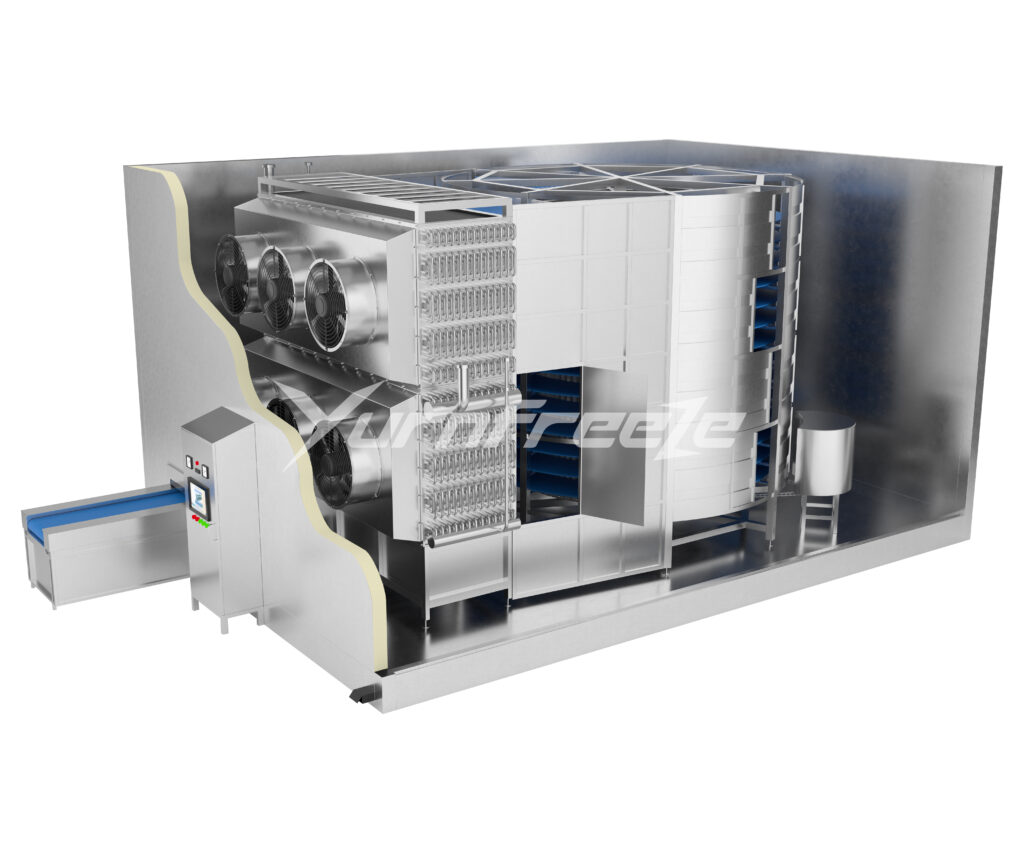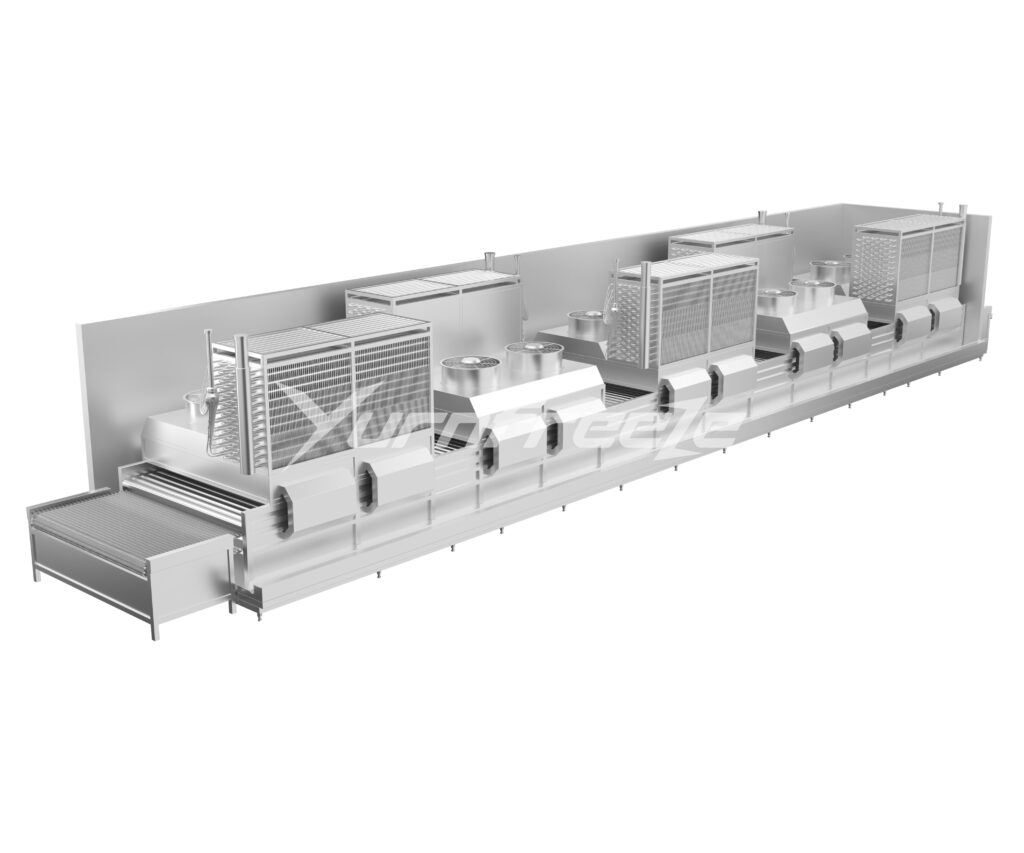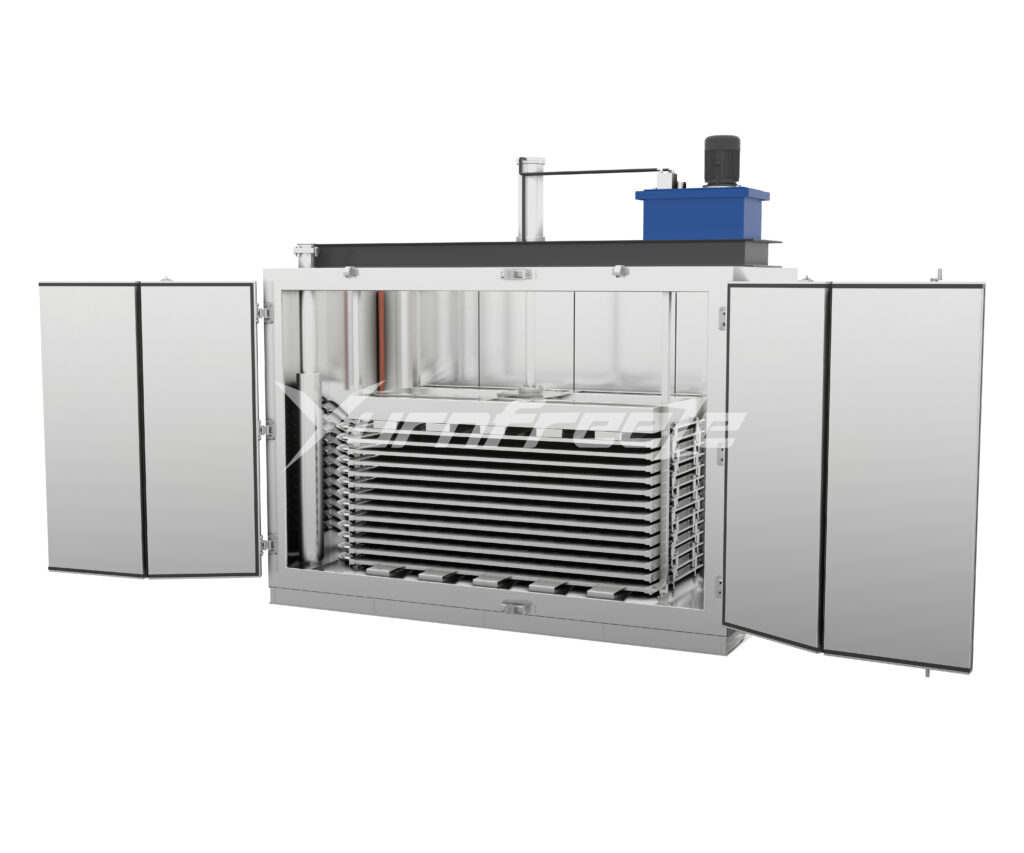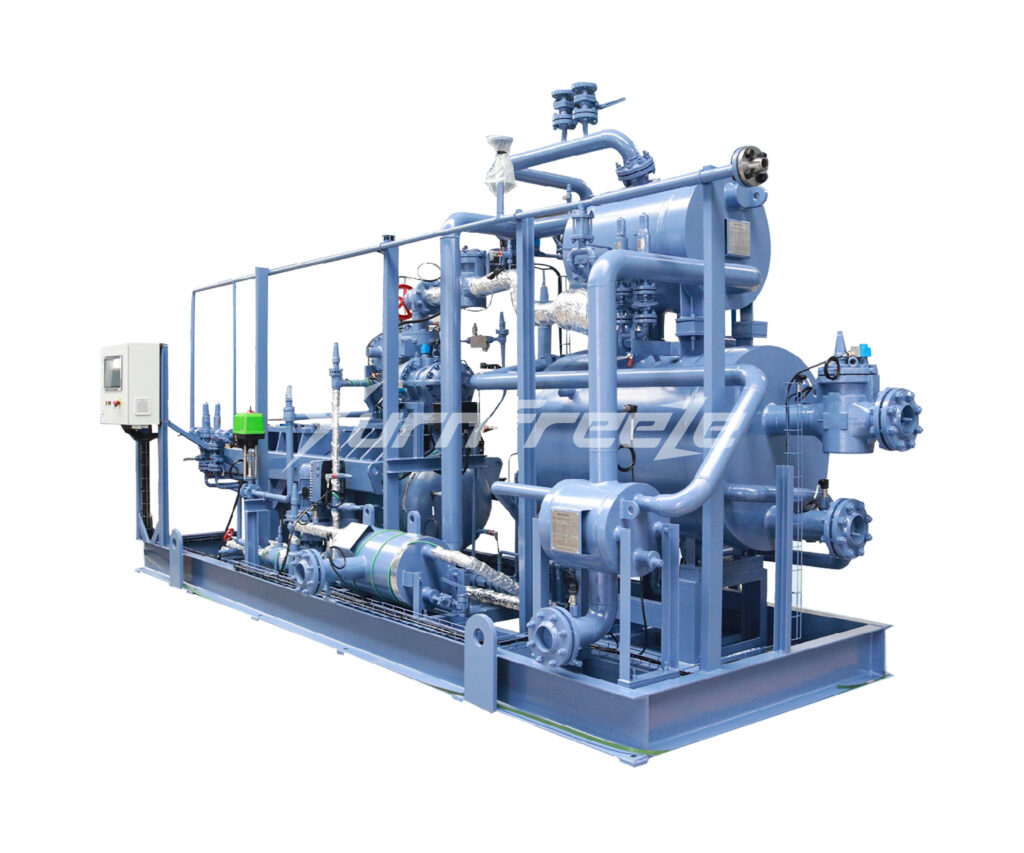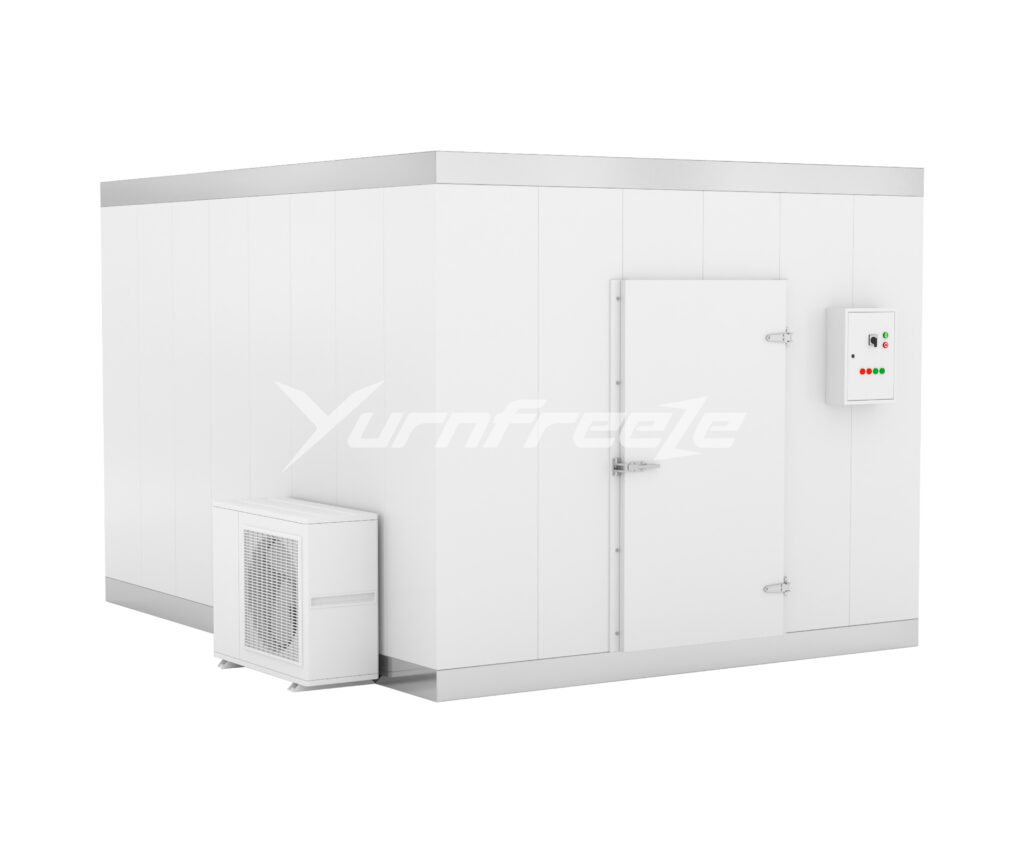1.What is cryogenic technology?
Quick freezing can preserve the original color, flavor and nutritional content of food to the greatest extent, slow down the reproduction of microorganisms and the activation and oxidation of enzymes. It is the most important method for long-term storage of food and is recognized internationally as the best food storage and preservation technology.
Why can quick freezing do this?
Quick freezing is to freeze the free water in the intercellular space of food and the bound water and free water in the cells into countless crystals at the same time. Due to the fast freezing speed, the ice crystals are small and evenly distributed, and the food tissue structure is not significantly damaged. The thawing speed also needs to be fast. When thawing quickly, the ice crystals melt into water and are quickly absorbed by the cells, with good recovery, which maintains the original freshness and nutrition of the food as much as possible.
In the freezing process of ordinary food, due to the slow freezing process, the number of crystal nuclei is small, and the ice crystals grow fast, so large crystals are generated. When thawing slowly, water turns into ice and increases in volume by about 9%. The large ice crystals exert greater expansion force on the cell membrane, causing the cell membrane to rupture and the tissue structure to be damaged. A large amount of water flows out during thawing, resulting in a significant decrease in food quality.
This is why freezing dough is not as simple as putting the prepared dough in the refrigerator for storage.
2.What is crystallization?
The freezing process of water is not a straight line. Instead, it goes through the process of cooling (ABC) – heating (CD) – maintaining temperature (DE) – rapid cooling (EF).
Theoretically, water will begin to freeze when it is lower than 0 degrees, but in fact, freezing occurs only when the water temperature drops below 0 degrees, that is, C. This phenomenon is called supercooling. There is a difference between the actual temperature at which ice crystals appear and the temperature at which ice crystals should appear in theory. This difference is called supercooling.
Why is there a temperature rise from C to D? Because water cools down by releasing heat. After it starts to freeze at point C, the large amount of heat released during the solidification process causes the temperature to rise rapidly. In this process, water maintains a relatively stable state, while precipitating ice crystals and releasing a large amount of heat due to solidification, so there is a stable period from D to E.
Until all the water becomes solid, no heat is generated, and the temperature will drop rapidly, which is the line from E to F.
Why do we need to know this? Because the concept here is closely related to quick freezing.
Food crystallization consists of two processes, one is the crystal nucleus formation process, and the other is the crystal growth process.
The process of nucleation
The process of producing stable solid nuclei is called nucleation process. When water is in a supercooled state (metastable state), crystal nuclei may form.
Food ingredients are complex, but the crystallization process is the same.
Under normal circumstances, the temperature will drop relatively quickly in the initial stage. When it reaches the freezing point of water, due to the existence of supercooling, it is necessary to continue cooling until the crystal nuclei are formed. The water molecules are displaced and combined with the crystal nuclei in an orderly manner. After they become larger, Ice crystals form. Afterwards, a phase change occurs, and the heat energy released causes the temperature to jump back to a temperature close to the freezing point (surface) or remain basically stable (center). This process is called the freezing stable period. After the stable period, the temperature will continue to drop until it reaches the same temperature as the freezing point. Medium temperature balance.
There is generally no stable supercooling phenomenon during food freezing, because the temperature of the surface layer of the food decreases quickly during freezing, destroying the supercooling state of the surface layer. However, there can be significant supercooling in cream, because when the moisture distribution in cream is extremely even, it is easy to show a long and stable supercooling phenomenon.
Crystal growth process
Crystal (ice crystal) growth is the process of continuous formation and growth of crystal nuclei.
Generally speaking, if the cooling rate is very fast, the nucleation rate is very high, and the growth rate is very low, a large number of small ice crystals will be formed; if the cooling rate is very slow, the nucleation rate is very low, and the growth rate is high, a small number of coarse ice crystals will be formed.
The microstructure of food tissue will undergo significant changes with different ice crystal forms. The extent of this change depends mainly on the location of crystal growth, which in turn depends mainly on the freezing rate and the water permeability of food tissue.
On the one hand, under slow freezing with less supercooling, ice crystals are formed outside the cells, that is, the cells are in an ice-rich matrix. As the number of extracellular ice crystals increases, the concentration of the extracellular solution increases, the osmotic pressure inside and outside the cells increases, and the water in the cells continues to penetrate through the cell membrane to the outside, causing the cells to shrink and become overly dehydrated. If the water permeability is very high, the cell wall may be torn and damaged, and dripping may occur during the thawing process.
On the other hand, if the heat transfer process is faster than the water permeation process in the case of rapid freezing and high supercooling, the water in the cells does not have time to penetrate out and is supercooled to form intracellular ice crystals. This is also the reason for cell rupture and deterioration of food quality.
3.What factors affect freezing technology?
Initial temperature of quick freezing
The main component that affects the quick freezing of dough is the mixture of water.
For most foods, almost 80% of the water freezes in the temperature range of -5~-1℃. This range is called the maximum ice crystal formation zone, which is the most important temperature range for ensuring the quality of frozen products.
The main components of dough are flour and water, and also contain a small amount of air, salt, sugar, yeast, oil, etc. Therefore, the water in it is not pure water but a solution containing organic and inorganic substances. These substances include salts, sugars, acids, and more complex organic molecules such as proteins, as well as trace gases.
Therefore, the freezing temperature of dough is strongly related to the aqueous solution it contains.
The freezing point of a solution is lower than that of a pure solvent, and the freezing point of a food is also lower than that of pure water. The ingredients of each food will be different. The initial freezing point of a general food is: -3 ~ 0.6℃. The higher the water content, the closer the initial freezing temperature is to the freezing temperature of pure water.
When the dough temperature drops to the freezing point, ice crystals appear. As the temperature continues to drop, the amount of frozen water gradually increases. However, to freeze all the water inside the food, the temperature must drop to -60℃. Such low temperatures are generally not used in the process. As long as most of the water is frozen, the requirements for frozen storage can be met.
Generally between -30 ~ -18℃, 94% of the water is frozen at -18℃, and 97% of the water is frozen at -30℃.
If food is stored for a long time, a temperature of -18℃ can meet the requirements, but the storage temperature of frozen products is still decreasing, sometimes it can be reduced to -30℃ or even -50~-40℃. This is mainly to maintain the color of the frozen product.
The freezing temperature should correspond to the storage temperature. If the freezing temperature is low and the storage temperature is high, the small ice crystals formed during freezing will gradually increase during storage, losing the advantage of fast freezing speed, and the final result is the same as slow freezing.
Freezing rate
Quick freezing is usually divided by two standards: cooling time and distance.
01
Division by cooling time
During the freezing process, the temperature of each part of the food is different. The surface freezes first, and the inside gradually freezes as the temperature drops. It is generally calculated based on the time when the center temperature of the food reaches the freezing point.
Therefore, the time required for the center temperature of the food to reach the maximum ice crystal formation area is less than 30 minutes, which is called quick freezing, and more than 30 minutes, which is called slow freezing.
Due to different food types, geometric dimensions, freezing points, pre-treatment and other conditions, this method of distinguishing quick freezing from slow freezing has certain limitations and cannot fully guarantee the quality of food.
02
Division by crystallization distance
5℃ is used as the freezing front, and the rate at which the ice front moves from the surface of the food to the inside is measured, and the freezing rate of the food is divided into three types based on this:
Quick freezing rate = 5 ~ 20cm/h;
Medium freezing rate = 1~5cm/h;
Slow freezing rate = 0.1 ~ 1cm/h
For example, for food with a thickness or diameter of 10 cm, the central temperature must drop to -5°C within 1 hour to be considered as rapid freezing.
The freezing rate affects the quality of frozen baked products. During the freezing process, the shorter the time for food to pass through the maximum ice crystal formation zone, the shorter the production time of the crystal nucleus, and the smaller the ice crystals formed, which will not cause damage to cells.
Temperature fluctuations
During the freezing or frozen storage process, the freezing temperature will fluctuate due to the influence of food transportation, differences in the refrigeration capacity of equipment, heat transfer of the box, etc. Some ice crystals will melt and recrystallize, and the number of ice crystals inside the food will increase, causing stress damage to the cells, resulting in a large amount of water loss, deterioration in appearance and poor taste. It is also an important and difficult to control challenge to freezing technology.
Summary of knowledge points
According to the rapid crystallization theory, the nucleation speed and growth speed of ice crystals are related to the supercooling state. The freezing point of dough is usually -5 ~ -1℃. When the temperature drops to this range, the crystal growth rate increases, but the nucleation temperature is not significant. The ice crystals generated are thick and small. The quality of frozen food in this temperature range is very poor. Difference.
When the temperature drops past the maximum ice crystal production zone, the freezing curve is the flattest, because during the freezing process, a large amount of latent heat is released, and sufficient cooling capacity must be provided to make the temperature of the frozen food quickly pass through the maximum ice crystal growth zone. At this time, the ice crystals The nucleation effect is greater than the crystal growth effect, and the number of ice crystals formed is large and small, so the quality of frozen food is good. This is the principle of quick freezing of food.








